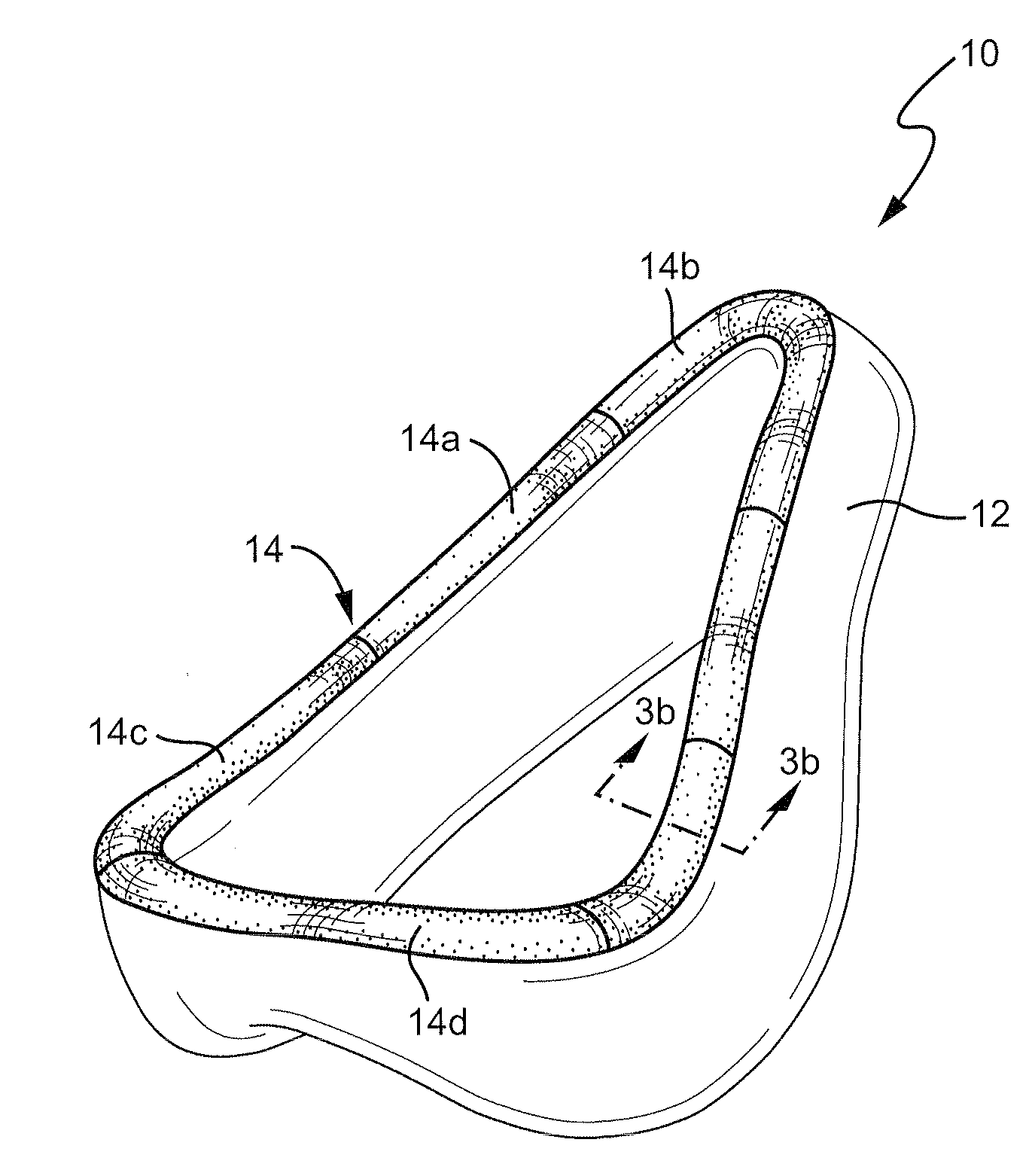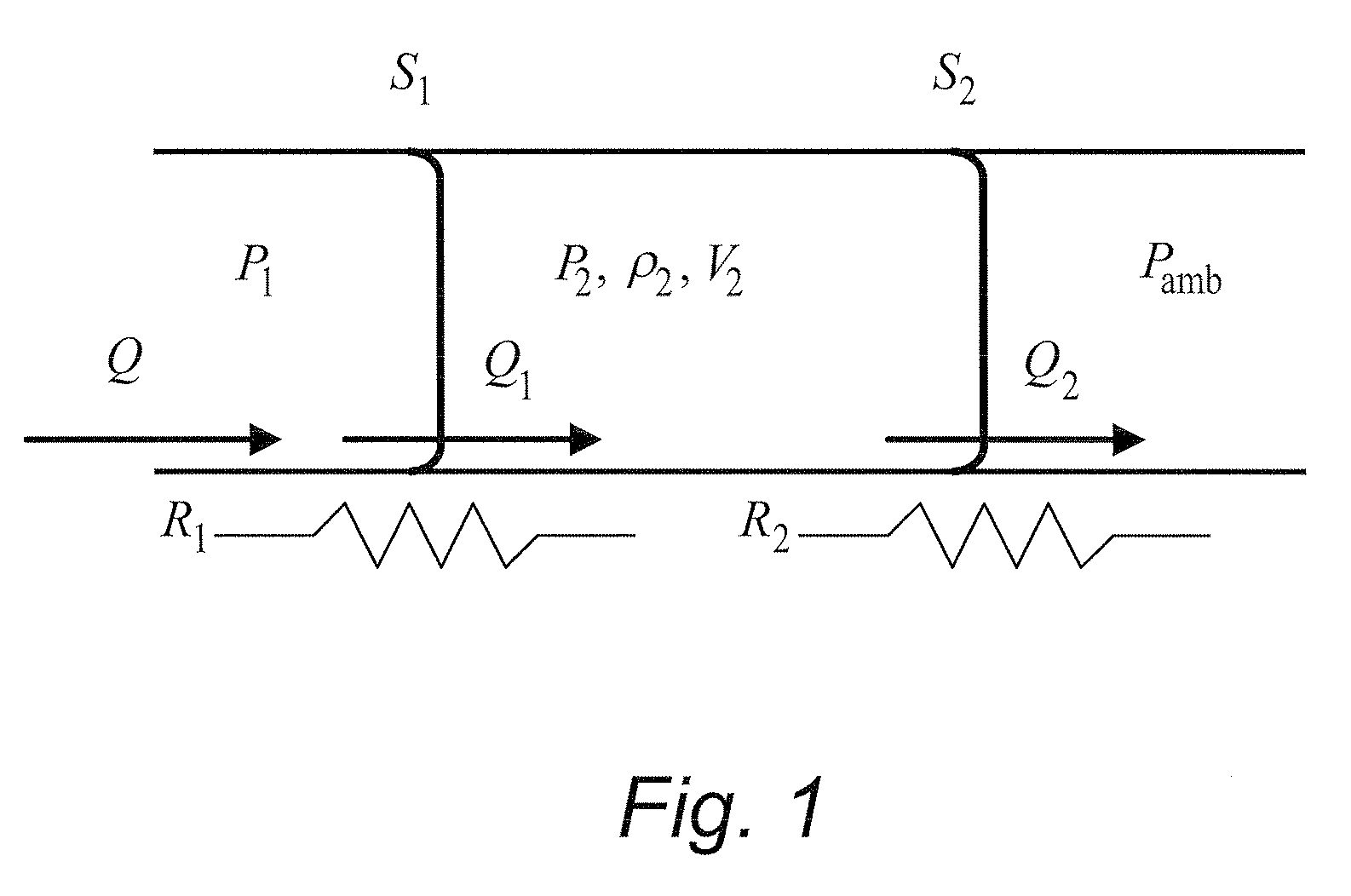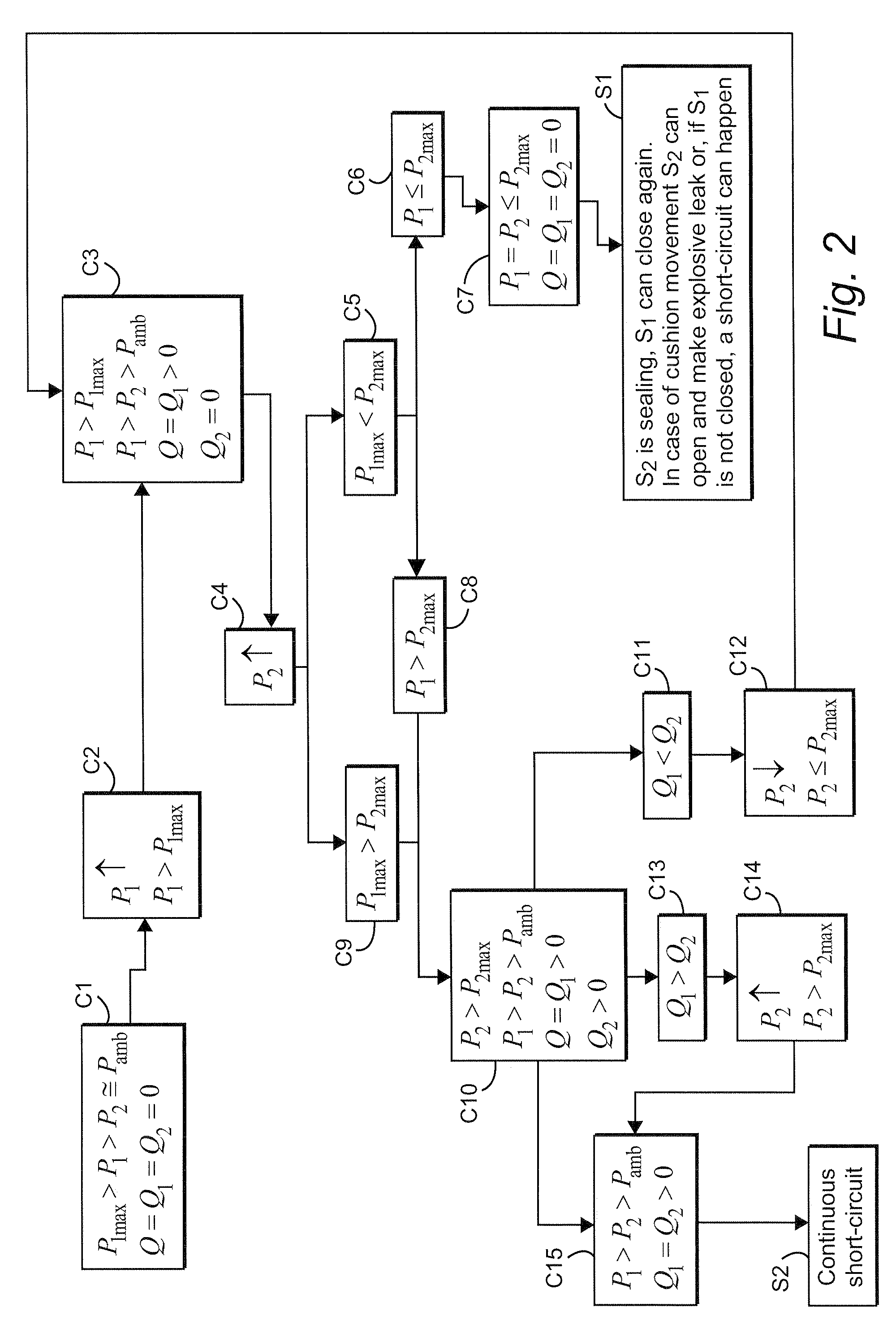Patient interface and non-invasive positive pressure ventilating method
a positive pressure ventilating and patient technology, applied in the field of patient interface and non-invasive positive pressure ventilating method, can solve the problems of increasing the pressure of the mask against the patient's face, reducing the effectiveness of therapy, increasing the speed and noise of the flow generator, etc., to improve therapy to a patient, reduce or eliminate the effect of problems caused by leakag
- Summary
- Abstract
- Description
- Claims
- Application Information
AI Technical Summary
Benefits of technology
Problems solved by technology
Method used
Image
Examples
first embodiment
[0057]Referring to FIGS. 3a and 3b, a patient interface 10 according to one embodiment of the invention includes a cushion 12 having a filler layer 14 provided on the cushion 12. The filler layer 14 is adapted to be in contact with the patient's skin. The cushion 12 may be formed of, for example, silicone and the filler layer 14 may be formed of, for example, foam. The filler layer 14 may be, for example, adhesively attached to the cushion 12, for example by glue. The filler layer 14 may also be mechanically connected to the frame of the mask as a skin that envelops the cushion. In that case, the filler layer 14 may be replaced, for example in a manner similar to replacing the foam over earphones. The filler layer 14 may be connected at the same location as the cushion, on the cushion itself, or at another point on the frame. The filler layer 14 may also be silicone foam injected over the silicone cushion 12 so that the cushion and the filler layer are a single object. The filler la...
second embodiment
[0058]As shown in FIG. 4, an interface 22 may include a seal 24 in contact with the patient's skin 20. A diffuser 26 (e.g., of foam material) is provided outside the seal 24 of the interface 22 to increase the resistance to leak flow Q and diffuse any leak flow that may actually occur. The diffuser 26 may be connected to the seal 24 in a manner similar to the connection of the filler layer 14 to the cushion 12 of the first embodiment. However, unlike the first embodiment, in which only the filler layer 14 contact the patient's face, according to the second embodiment the seal 24 of the interface 22 and the diffuser 26 are provided in series and both contact the patient's face. Accordingly, in the second embodiment the “sealing” provided by the seal 24 and diffuser 26 is broader than the “sealing” provided by the first embodiment as the seal 24 and the diffuser increase the resistance to leak flow. It should be appreciated that the seal may provide very little, or no resistance, to l...
third embodiment
[0059]Referring to FIG. 5, an interface 22 includes a primary seal 24 adapted to contact the patient's skin 20. The primary seal 24 may be, for example, silicone. A secondary seal 32 is placed inside the interface 22 and may also be in contact with the patient's face. The secondary seal 32 may be, for example, foam. The space between the primary seal 24 and a secondary seal 32 includes secondary vents 30 which are provided in addition to primary vents 28. A vent flow VF is vented through the primary vents 28. The volume between the primary seal 24 and the secondary seal 32 is vented through secondary vents 30 to create a local low-pressure area near the primary seal 24, i.e. P21. Any leak flow across the secondary seal 32 will be vented through the secondary vents 30. The secondary vents 30 may be placed in an area of the patient interface where the vented leak flow Q will not disturb the patient.
PUM
 Login to View More
Login to View More Abstract
Description
Claims
Application Information
 Login to View More
Login to View More - R&D
- Intellectual Property
- Life Sciences
- Materials
- Tech Scout
- Unparalleled Data Quality
- Higher Quality Content
- 60% Fewer Hallucinations
Browse by: Latest US Patents, China's latest patents, Technical Efficacy Thesaurus, Application Domain, Technology Topic, Popular Technical Reports.
© 2025 PatSnap. All rights reserved.Legal|Privacy policy|Modern Slavery Act Transparency Statement|Sitemap|About US| Contact US: help@patsnap.com



